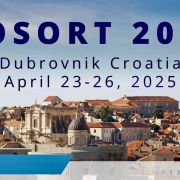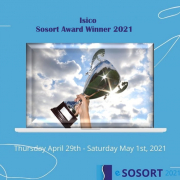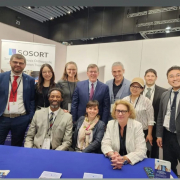Scoliosis screening: the ISICO study on artificial intelligence in the running for the SOSORT Award
Developing a new tool for scoliosis screening in a tertiary specialist setting using artificial intelligence: a retrospective study on 10,813 patients is one of the ISICO studies due to be presented at the next SOSORT conference, which will take place in Melbourne, Australia. The fact that the study is also a candidate for the SOSORT Award consolidates the standing of ISICO, which in recent years has not only participated with its research but also been awarded this prestigious prize on several occasions.
In recent years, we have seen an increasing body of evidence supporting the efficacy of conservative treatment (e.g., exercises, soft and rigid braces) for adolescent idiopathic scoliosis (AIS), because treating a skeletally immature spine conservatively is certainly more effective and gives better results. The use of the conservative approach, however, has to be based on accurate and sensitive early screening for the condition, which often involves the use of X-rays.
What can be done to continue screening patients while at the same time making less use of X-rays? “Although technological improvements have, in recent years, made it possible to reduce the radiation dose in radiographic examinations, it is not possible to completely eliminate the long-term risk of cancer due to the stochastic effect of even low doses of radiation,” explains Dr Francesco Negrini, ISICO physiatrist and author of the research. “This is why we set out to analyse whether adding other rapid and reliable clinical parameters to the angle of trunk rotation (ATR°) might improve scoliosis screening in terms of sensitivity and specificity, making it possible to limit the use of X-rays to cases in which it is indispensable.”
How was the research conducted? The researchers looked at 10,813 patients between the ages of 4 and 18 who underwent clinical and radiological evaluation for scoliosis at a tertiary clinic specialising in spinal deformities. After excluding patients who wore a brace, had secondary scoliosis, or had no hump, 7,378 cases remained and were included in the analysis. In these cases, the following information was collected: ATR°, hump (mm), visible asymmetry of the waist, scapulae and shoulders, family history, sex, BMI, age, menarche (yes/no), and location of the curve. “At this point, we applied advanced analysis methods involving the use of artificial intelligence to try and create a model that would allow us to accurately select the cases needing to be X-rayed,” Dr Negrini goes on, “and we identified ATR°, hump (mm) and visible waist asymmetry as the clinical parameters best able to accurately classify Cobb angle measurements.”
On the basis of this conclusion, the researchers were able to affirm that classification models obtained through artificial intelligence may effectively improve non-invasive screening for AIS, thereby making it possible to reduce the X-ray exposure of healthy young individuals. “On the basis of the positive results obtained in the study, we may, in the near future, be able to develop a very flexible and user-friendly tool” says Dr Negrini. “This would allow doctors working in this specialised field to decide to prescribe radiographic imaging only when it is strictly necessary.”










Leave a Reply
Want to join the discussion?Feel free to contribute!